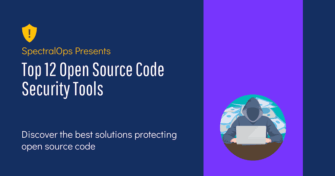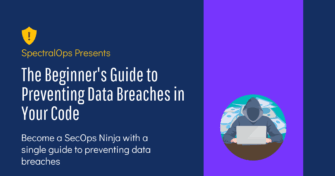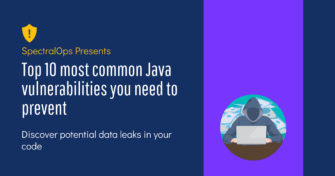Top 12 Open Source Code Security Tools
Open source software is everywhere. From your server to your fitness band. And it’s only becoming more common as over 90% of developers acknowledge using open
You don’t control most of the code in your software. Unfortunately, that’s the reality of today. Open-source libraries, third-party components, and vendor integrations make up the bulk of most modern applications because they save time and resources, allowing you to build on existing frameworks rather than reinvent the wheel. But with every supply chain component, you’re opening a potential doorway for attackers to exploit.
With supply chain attacks surging over 400% in recent years, managing these risks has become a critical priority for any organization that relies on external code. Every vendor you work with and every dependency you introduce can carry hidden vulnerabilities, potentially putting your entire infrastructure at risk.
So let’s see how you can actively manage and reduce these threats, protecting both your software and your business from devastating supply chain attacks.

Supply chain risks in cybersecurity stem from relying on third-party vendors, who often become the weakest link. Even if your security is solid, vendors with poor security postures can open doors for attackers to infiltrate your systems. For instance, if a vendor neglects to patch a known CVE (Common Vulnerabilities and Exposures) in their software, attackers can exploit that vulnerability to gain unauthorized access through exposed interfaces or APIs integrated with your systems.
This makes real-time visibility critical – without it, you’re blind to the risks lurking within your supply chain, which can involve thousands of third-party vendors, libraries, LLM models, and integrations. The sheer scale of modern supply chains means even a single overlooked vulnerability can cascade into a major breach.
Real-time monitoring that integrates directly into your DevOps pipeline can catch issues like compromised dependencies before they hit production. When combined with automated workflows, security checks, and audits – you are much better equipped to identify and address supply chain risks the moment they surface.
Cyber supply chain attacks target weak links within your third-party dependencies and updates, often with devastating results. Third-party vendor compromises are a prime example – attackers infiltrate a trusted vendor’s systems and then use that access to spread malware or steal data through integration points, as seen in the SolarWinds breach.
Another sophisticated tactic is malware insertion via updates, where bad actors tamper with software patches before they reach you, allowing malicious code to slip directly into your infrastructure. Counterfeit software also presents a real risk if malicious versions of legitimate applications, embedded with backdoors or spyware, can be unknowingly installed.
These types of attacks can undermine your systems’ integrity, compromise sensitive data, and create vulnerabilities that ripple through your entire environment, affecting operational continuity and client trust.
You can’t control third-party vendor security directly. But you can, however, control which vendors you work with and how you manage their security practices.
Start by holding third-party vendors accountable for security. Build robust contracts that include security-specific SLAs – detailing expectations for patching vulnerabilities, encryption standards, and mandatory security audits. Implement automated vendor risk monitoring solutions and enforce compliance through contractual penalties for non-adherence.
Threat modeling gives you a clear view of where attackers could strike by mapping out your external dependencies, third-party integrations, and data flows. Focus on the prioritized components that handle sensitive data, such as payment processors or authentication services, as these are prime targets for attackers. APIs are an area of special interest. Specifically, examine how external. APIs are secured – It look for weak points in API key management, authentication methods, and data encryption.
This should be an ongoing practice in which threat models are regularly updated as new dependencies or services are added. – to help you anticipate and mitigate risks before they become active threats.
An overlooked area of vulnerability is often the CI/CD pipeline itself. Hackers can exploit vulnerabilities at any stage of the pipeline to insert malicious code. Strengthen security by adopting immutable pipelines, where build artifacts and environments are locked and cannot be modified after deployment. Use cryptographic signing to verify the integrity of your builds.
If you run builds in isolated, containerized environments you can guarantee that to ensure that each build operates in a clean, self-contained space. This separation prevents any leftover data or vulnerabilities from previous builds from affecting the current one, which reduces it significantly reducing the risk of cross-contamination.
Take control of your cloud infrastructure by treating your IaC just like any other critical software. Automate security checks with Policy-as-Code, using tools like Open Policy Agent (OPA) to validate configurations before deployment. Regular scans can catch IaC misconfigurations early, reducing the risk of insecure infrastructure making it into production.
Security audits are not a checkbox exercise. Instead, they should be a Don’t treat security audits as a checkbox exercise – turn them into a proactive tool to uncover weak links in your supply chain. Consider auditing third-party components and dependencies as they get added, updated, or changed,in real time, not just at scheduled intervals. Implement automated audits for every major change or update so you can catch vulnerabilities the moment they are introduced.
You never want your software to rely on compromised components. To stay ahead of dependency risks use tools like JFrog to continuously monitor for vulnerabilities, especially in transitive dependencies continuously – those buried deep in your dependency tree. Set automated rules so you can block any risky or outdated packages from entering your pipeline, thus preventing them from becoming part of your software stack.
Security-focused peer reviews are valuable for checking that external libraries and dependencies are being properly validated, but they have their limitations. Human oversight can easily miss subtle vulnerabilities in external components or fail to catch misconfigurations, like hardcoded secrets or API keys directly within your codebase.
Scanning tools like Spectral can be integrated into your review process to detect hardcoded secrets, API keys, or sensitive data that may have been inadvertently exposed in the codebase. Spectral scans each commit for potential leaks and uses the power of AI/ML to catch what your developers might miss.
To minimize the blast radius of a breach, apply the least privilege principle rigorously across your CI/CD pipeline and external integrations. Lock down access at every layer by using identity-based controls that tie specific services or workloads to unique, minimal permissions. In the event that one part of your system is compromised, this approach will stop privilege escalation in its tracks.
Even with least privilege practices in place, credentials can still pose a risk. Rotate API keys, credentials, and implement secrets scanners to reduce the window of opportunity for attackers to exploit compromised access points.
Supply chain attacks are a growing threat, and managing them requires more than just patching vulnerabilities – you need constant vigilance and automation built into your pipeline. With attacks skyrocketing, real-time monitoring and proactive security techniques and tools are essential.
Boost your supply chain resilience with the deep visibility of Spectral across your entire CI/CD pipeline. Spectral detects misconfigurations, vulnerabilities, and hardcoded secrets from code to cloud. Integrated with tools like GitHub, GitLab, Jenkins, and more, it provides real-time, automated detection and remediation so you can catch risks before they turn into threats.
Want deeper supply chain security without slowing down development? Get started with Spectral today!

Open source software is everywhere. From your server to your fitness band. And it’s only becoming more common as over 90% of developers acknowledge using open

Quick announcement: with SpectralOps you can prevent data breaches by protecting your code from hard coded secrets and misconfigurations. You know how it goes: Every website,

It’s easy to think that our code is secure. Vulnerabilities or potential exploits are often the things we think about last. Most of the time, our